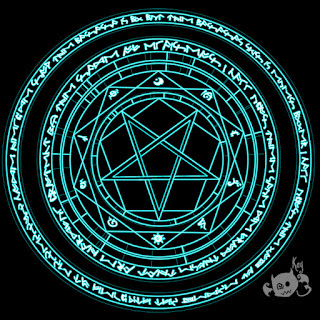A magic item that causes a team of skilled goblin artisans to appear and quickly refresh the character for another round of battle.
When invoked, 1d4+4 goblins in overalls appear, with their tools. In one round they bind the character's and character's mount's wounds, repair their armour and quickly clean them. Then they vanish again. This provides the following benefits:
- Regain 1d6 hit points.
- Regain any damage to armour.
- End any detrimental physical environment effects such as being on fire, doused with acid, covered with frost, etc.
This takes one full round, during which the character must stand immobile or lose the benefit. During that round the character may be attacked, and will suffer the normal damage. The goblins automatically dodge any attack that doesn't have an area of effect or is magical. Each additional time the pit crew is summoned during the same combat there is a 3-in-6 chance that two or more of the goblins will start a fist-fight and forget what they're doing. During this and further summonings within the same combat, the player only receives healing.
Once, many centuries ago, a goblin who was messing around with a ballista briefly became the fastest thing alive. The god of speed appreciated this sacrifice (intentional or not) and offered the goblin's tribe a blessing: as long as they kept a team ready to service his chariots at an instant's notice, their wounds would heal three times faster.
The god is long forgotten and his holy relics scattered, but the goblins still keep the pit crews on alert and still enjoy those extra couple of HP regained each day.
They're quick, but not supernaturally fast. They can clean and bandage a wound, or splint a broken limb within one round. They replace pauldrons, vambraces and greaves, tighten straps, lace boots. They wipe a character's armour down with some kind of cleaning solvent they almost certainly don't use among themselves.
Charges: 1d6+2.
Appearance: a pair of felted cubes connected by a short leather thong.






